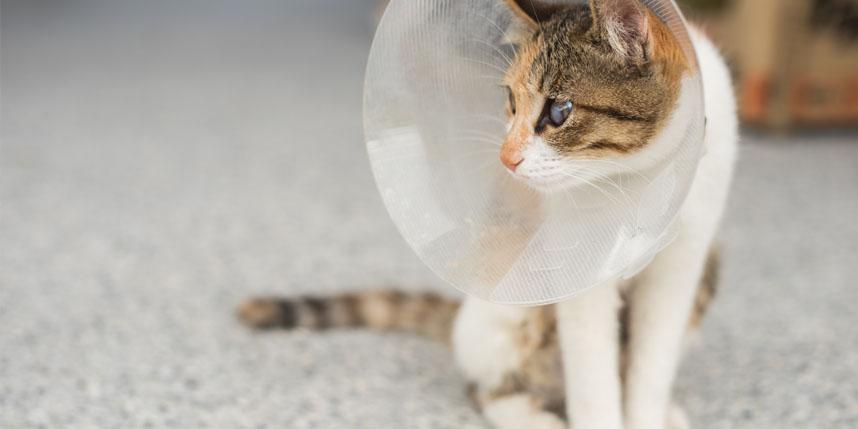As you already know, cats are extremely territorial. They don’t fancy the idea of another kitty taking over their day-to-day space.
When introducing a kitten to a family resident tomcat, you need to be extra careful.
Forget about those who subscribe to the “throw both pets in one room and they’ll figure it out” theory.
Sure, this works in certain situations but it can also be very risky. The kitten may end up without an eyeball, ears, or worse, turn up limp or dead.
Nothing makes a pet parent happy than seeing their pets getting along. Walking in on them curled together on the couch, playing happily around the house, or sharing the food bowl is a sight to behold.
Yet, for many cat owners, it takes a long and frustrating process to arrive there. The fact is that the introduction of the pets sets the tone for the rest of their lives.
To help you do it right, we have outlined 7 factors to consider when introducing a female kitten and a male cat.
1. Ensure That Both Cats Are Fixed

The first order of business when introducing cats of the opposite gender is to sterilize them.
Unless you plan on breeding your babies, fix them as early as you can.
Queens can get on their first estrus as early as four months. Male cats, on the other hand, can become sexually mature at about 6-12 months.
When nature calls, a queen will pick on any mate to breed with – including the one at home.
On the other hand, the tomcat cannot resist a queen on heat. To avoid dealing with kittens and mating drama, have the kitten and the male spayed and neutered respectively before they meet.
Obviously, if the kitten is too young to be fixed, have the tomcat neutered. As soon as she is ready to be spayed, take her to the vet as well.
Related Post: How Long Does a Male Cat Stay in Heat?
2. Separate Both Cats
Now that both cats have been sterilized, the next thing to do is to introduce them to each other with the least drama.
As said before, male cats are terribly territorial. When you bring in a female kitty around, he will view her as a threat.
To him, the new addition is there to eat his food, play with his favorite people, and sleep in his hideouts.
For the safety of the younger cat, separate both felines at first. You want to put the kitten in a safe room. This should be a place where the male cat has no access.
Let her hang in there before the male gets used to her scent and gets acquainted with her.
In the same breath, get a safe place for the tomcat. Ideally, when the kitten first joins the family, the resident male cat will urinate in his territory as a way of marking it.
This can be the couch, corner of a room, under the closet, or a windowpane. Secure one item or place and keep it off from the kitten.
3. Introduce the Cats Through a Barrier

After observing the behavior of the male cat when the female is around, you can tell when to introduce the cats to each other.
This is after playing with the cat with the kitten scent on your clothes. If the male cat stops being aggressive and displaying territorial behavior, feel free to bring the kitten out to meet him.
To be safe, use a carrier to introduce both felines. Watch how they react to each other. If claws come out, whisk the kitten in the carrier away to safety.
If you don’t have a carrier, place the kitten on your lap and invite the male cat to play.
Don’t expect instant acceptance. He may ignore the invitation for a few days or weeks. Keep going until he comes around.
4. Offer Plenty Of Attention To The Older Cat
Kittens are like little human babies. They need lots of affection, attention, and care.
As they make the kittens feel comfortable at home, most pet parents neglect their older cats.
Don’t make this mistake. The male cat will feel neglected and may show aggressive behavior.
To solve this, find time to play with him, show affection, groom, and just pet him every day.
5. Monitor Things Closely
A kitten has a lot on her plate. She has just been ripped away from her family. She’s trying to get warmed up in her new place.
When you add that to an ambitious male cat following her around, she can get very scared.
You want to keep the introductions slow. Let the cats sniff each other over a closed door.
If the safety of the kitten is compromised, retreat and try again another day.
6. Learn How To Deal With Aggression

During the early stages of introducing a female kitten and a male cat, the latter is likely to display aggression towards the former.
He will hiss, growl, spit, urinate, and flatten his ears when he sees her.
If he keeps the behavior for a long time, you’d naturally feel like punishing him.
However, doing this will only make things worse. The best way to deal with aggression is to assure the male cat that he’s still your best boy.
Soothe him, offer treats when he does well, play with him more, and be patient.
Related Post: How Much Hissing is Normal when Introducing Cats
7. Patience pays
Cat-to-cat intros can take anywhere from a few days to a few months.
While many of us hope for a quick process, things may take an awfully long time.
You will feel like throwing in the towel a number of times. You may question whether your furbabies will ever coexist with each other – let alone create a strong bond with each other.
However, don’t give up. Be patient and do your due diligence. The cats will soon give you a pleasant surprise.
Related Post: When Should You Leave a New Cat Alone with Resident Cat?
Introducing A Female Kitten To A Male Cat: Closing Thoughts
Adding a kitten to the family is an exciting and challenging time. This rings true if you own a male cat that is gotten used to being alone for a while.
Thankfully, with the right introduction, the two felines will get along well with each other.
Who knows – they may become best of friends for life.
Image sources: 1, 2, 3

Hi! I am Eleanor Price. I started this website after my cat, Louie, almost died from a case of botulism (a type of food poisoning often caused by bacteria that grow on food items). Turned out that my cat’s diet was the problem. I have made it my duty to provide the best information and recommendations about everything cat lovers need to know about their felines’ health and wellbeing. My goal is to find the most informative content on anything feline-related and share it with fellow hardworking kitty lovers.

